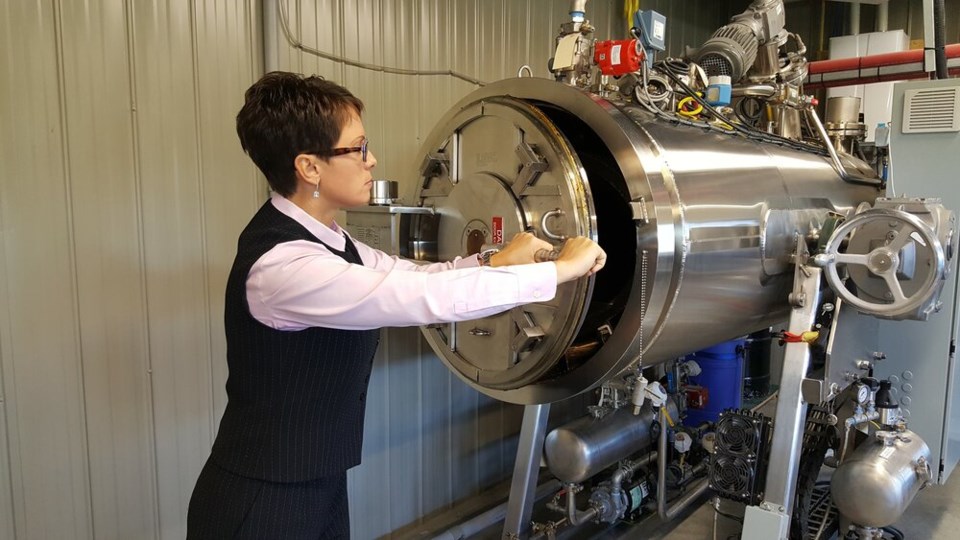Six Canadian provinces — British Columbia among them — reported a total of 108,000 deaths in 2023.
In B.C., the number was 45,102. Of those, 76.8 per cent were cremated by fire.
Each flame cremation emits 242 kg of carbon dioxide. That’s a total of 7,418,442 kg of CO2 that the remaining 5.6 million residents of the province would have to breathe.
On the other hand, four provinces — Saskatchewan, Quebec, Ontario and Newfoundland and Labrador, plus the Northwest Territories — have shown the foresight to make available to their residents a process called alkaline hydrolysis, also known as aquamation or water cremation or bio-cremation or several other less scientific terms.
More than three years ago, the David Eby government received a petition — now carrying 3,317 signatures — requesting that the province revise its legislation governing burials and cremations. The petition urges B.C. to join those four other Canadian provinces and one territory in making available to its residents alkaline hydrolysis.
The government has yet to reply.
The Eby government has a lot of urgent issues on its plate. But this does not need to be one of them.
B.C. isn't alone in showing lack of foresight. Five other provinces are also dragging their feet, some of them out of sheer ignorance. Manitoba, Alberta, New Brunswick, Nova Scotia and Prince Edward Island have been equally negligent — all failing to provide legislation that would make the process available to their residents
Yet the B.C. ministries responsible for this area of administration have done precisely nothing — not even offering the courtesy of a reply to the provincial Aquamation Coalition. The Ministry of Public Safety and Solicitor General said it’s still examining the matter, but there’s no timeline for a decision.
Aquamation technology was first developed in 1888 in England to dispose of livestock bodies. It was adapted for disposition of human remains in 1993 by doctors at Albany Medical College in New York. The process has gained gradual acceptance since the early 2000s. It’s been legalized in 31 U.S. states.
The method accelerates the natural decomposition process by immersing the body in a solution of 95 per cent water and five per cent alkaline (potassium or sodium hydroxide).
There are two technologies: one in which the water is heated to 320 to 350°F under pressure to prevent boiling; the other that sets the temperature at 208°F. The process takes between four and 16 hours, depending on the type of machine used.
Once completed, the effluent is discharged into wastewater systems as a form of peptide soap. All that remains are bones, which are dried and pulverized into a white powder — and then given to the family.
It’s regarded as a gentler way of departure and causes negligible harm to the environment.
Some powerful groups have fought to stop the use of aquamation, some from the death-care industry itself. But enlightened funeral directors are contemplating the new method. Some predict it will replace flame cremation within a few years.
The cost to consumers — $1,600 to $2,500 — is slightly more than flame cremation, but it will be more affordable once it gains wider acceptance.
Mortality projections for the next several decades — in the billions globally — will become a massive problem due to the demographics of aging populations. Combine that with the impact of global warming, wildfires, flooding and other climate extremes, plus potential new epidemics.
(Statistics Canada projects total mortality numbers of 340,800 to 395,900 in 2030, almost 496,000 in 2040, 504,200 in 2050 and up to 515,000 in 2060. Multiplying those projections by 242 comes to between 82.5 million and 124.5 million kg of CO2.)
The Canadian cremation average was 74.5 per cent. Multiplying 108,000 by the same 242-kg factor amounts to over 26 million kg of CO2 emissions in one year.
Under Canada’s 1999 Environmental Protection Act, every Canadian has a right to a healthy environment. By unnecessarily imposing significantly added levels of contaminants to the atmosphere from the very act of disposing of bodies seems the worst conceivable way of memorializing the dead.
Environmentalists love the idea of aquamation. Interest grew significantly when environmental champion, anti-Apartheid crusader, and Nobel laureate Archbishop Desmond Tutu of South Africa arranged for aquamation to be used at the time of his death, which happened at the end of 2021.
Many funeral directors favour the process, including Chris Benesch of Earth’s Options in Victoria. He says his premises could accommodate three alkaline hydrolysis machines. Residents of B.C. deserve a choice, Benesch says, and yet the present government continues to keep “kicking the can down the road.”
Carbon dioxide emissions from flame cremation aren’t the only pollutants. Burning bodies produce toxic mercury from tooth filling and metal vapours from surgical implants, alongside releases of hydrogen fluoride, nitrogen oxide, sulphur dioxide, carbon monoxide, hydrogen chloride, particulate matter, and heavy metals.
“We have no sense of what’s coming,” Carlton Basmajian, planning professor at Iowa State University told this reporter.
“Like a lot of questions, it’s going to take a crisis or catastrophe before people start paying attention. We’ve got four decades of death coming—a lot more than we’ve had at any point in history.”
What will it take for the B.C. government — and those five other provinces/territories — to take this matter seriously?
Ian Sutton has been a reporter for over 56 years and is the author of two books on alternative methods of human body disposition.



